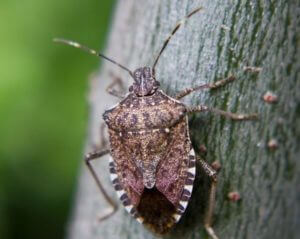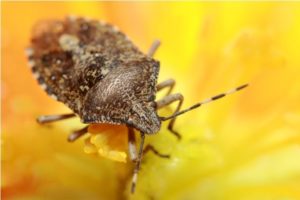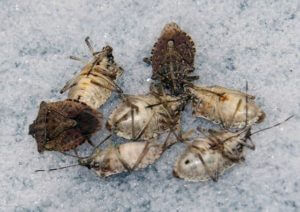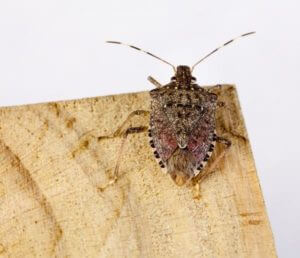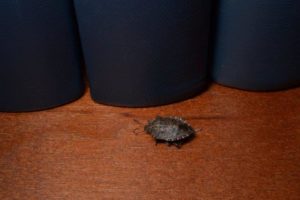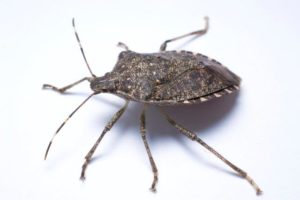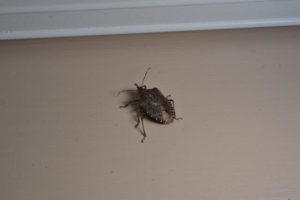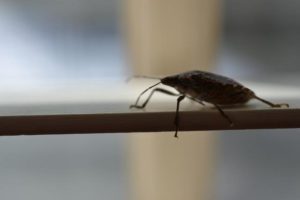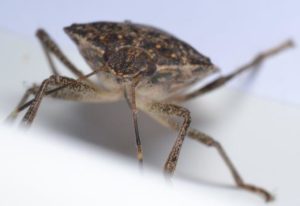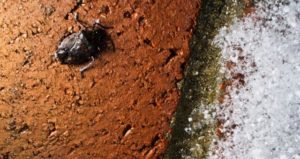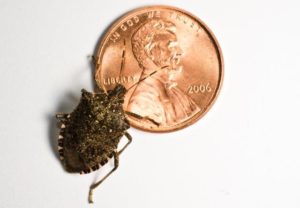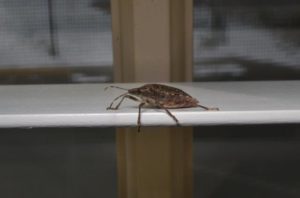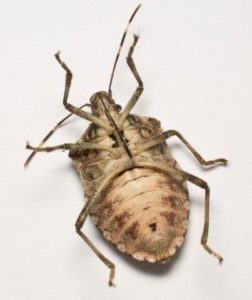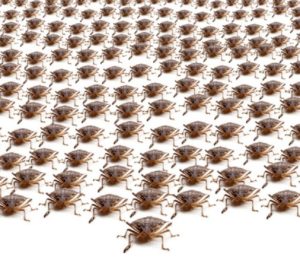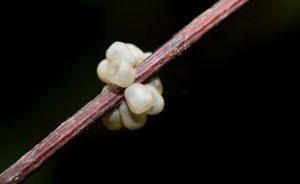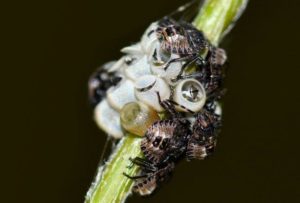What Does a Stink Bug Look Like?
While several types of stink bugs live in the Mid-Atlantic, rough, brown, and brown marmorated stink bugs are common. During cooler months, these plant pests often take shelter indoors. Their mottled, brown bodies offer camouflage in the garden but make them easy to spot crawling on walls or buzzing around lights inside.
Stink Bug Photo Gallery
Many pests similar to stink bugs wander into homes for a variety of reasons. For example, assassin bugs look like stink bugs but feed on blood. Specific trees near your building may attract other lookalikes, such as western conifer seed bugs and boxelder bugs. The stink bug pictures below can help you identify a pest issue for more effective control.
Close-up image of a stink bug on a tree
Picture of a stink bug in nature
Brown marmorated stink bugs, the most common stink bug species in the area, are agricultural pests. Their blotchy, light and dark brown coloring and broad, shield-like shape let them blend in with tree bark and leaves.
Bottom view of stink bugs
Stink bugs get their name from special glands on their backs and between the first and second pairs of legs on their pale undersides. When stink bugs are threatened or crushed, they release a unique, foul odor that distinguishes them from other pest species.
Overhead stink bug image
A few markings can aid in stink bug identification. These insects have light and dark stripes on the edges of their lower abdomens and light bands on their antennae. Assassin bugs and western conifer seed bugs feature similar markings on their bellies, but neither of these pests has banded antennae.
Stink bug on the floor of a home
Close-up of a stink bug’s wings
Stink bug in a home
Stink bug on the window
The noisy, erratic flight of a stink bug makes them hard to ignore in homes or businesses. This pest has thick outer wings that cover a second set of wings just visible at the end of its abdomen. Stink bugs make a loud buzzing sound as they fly and frequently bump into people and objects.
Close-up image of a stink bug’s head
Adult stink bugs have small, oval heads and dark, round eyes. This feature helps to separate them from other pests. Assassin bugs and western conifer seed bugs have elongated heads, while boxelder bugs have bright red eyes.
Photo of a stink bug in winter
This image of a stink bug at the edge of a snowy yard illustrates their habit of moving indoors to avoid cold weather. As temperatures start to drop, stink bugs often enter buildings to find a warm place to overwinter. If you spot slow-moving, brown insects inside during fall through spring, they might be stink bugs.
Stink bug size in comparison to a penny
Brown marmorated stink bugs are about the size of a dime at a little over a half-inch long. Measuring three-quarters of an inch or more, assassin bugs and western conifer seed bugs are typically larger. Boxelder bugs are roughly the same size as stink bugs, but their black and orange coloration sets them apart.
This image of a stink bug indoors against a snowy backdrop
depicts a typical time of year to see these pests inside.
Picture of the underside of a stink bug
Stink bugs have six thin legs that distinguish them from similar plant pests like leaf-footed bugs and western conifer seed bugs. The lower hind legs of those insects have a wide, leaf-like shape, while a stink bug’s back legs are smooth and narrow.
This stink bug photo demonstrates how these pests tend to gather by the
hundreds or even thousands when they move into buildings
Close up images of stink bug eggs
Stink bugs hatching from eggs
Stink bugs attach their eggs in groups of 20 to 30 to the stems or undersides of leaves. Local apple, crabapple, and pear trees are typical spots to find stink bug eggs, as the pests don’t reproduce in homes. Their eggs are barrel-shaped and pale yellow, white, or green. Brown stink bug nymphs with red eyes emerge after four to five days.
Identifying Stink Bugs
Stink bugs don’t harm people or damage property, but they can be a real nuisance in large numbers. Since so many insects look like stink bugs, pinpointing the cause of an infestation lets you respond with the right pest control tactic for quick, long-lasting relief. For help with stink bug identification or removal, contact the experts at Western Pest Services.
